Copilot is just a fancy autocomplete...
December was a very Copilot month for me. After seeing some glimpses of new capabilities at Directions and more later at Ignite, I decided to spend some time trying out the “new” features of GitHub Copilot in Visual Studio Code. They’re not really new; they’ve been around for a while. I just never used them, as I thought they were not useful for AL development.
Boy was I wrong…
Copilot is no longer just a fancy autocomplete… it has become much more!
I didn’t want to get my hopes up too much with AL, so I started testing everything out with more mature languages like C# and TypeScript, but the more I tried the new features with AL, the more I was convinced that I needed to start sharing that autocomplete is no longer the only useful part of Copilot!
They’ve now also introduced a free tier for GitHub Copilot. This means everyone can now “just try it”, without any commitments!
For everyone who’s going to try Copilot out, or has been using it for a while, I wanted to share a few very concrete examples of how I’ve been using features like Inline Chat, Copilot Edits, and Copilot Chat for AL (and a few for other languages), that will hopefully move you to explore more than just the “tab, tab, tab” behavior of AI.
Auto-complete
I really won’t spend much time here, this is the first use-case you’ve noticed, and it feels most natural. Do you see a grey suggested code you like? A tab and it’s yours 😉
I use this all the time, from procedure declaration, and adding fields, to commenting code

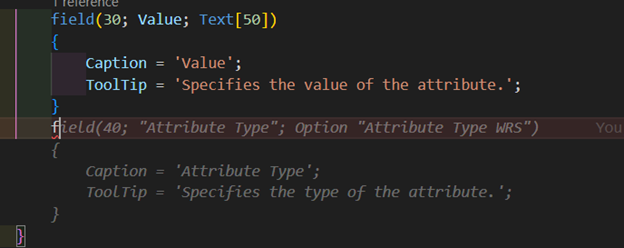
If you didn’t write quality ToolTips so far, then don’t expect quality ToolTips from Copilot

Yeah, yeah, it’s not a meaningful comment, but you get the idea.
One very important note to keep in mind is how Copilot knows what to suggest. It looks at your open files and takes up to 4 files as context. If you’ve got more than 4 opened, it tries to do its best to take something, which is not always the most appropriate file. So, if you want to have better Copilot suggestions, close the unrelated tabs and only keep the relevant ones open.
I was used to having tens of files opened, so I needed to get used to right-clicking the tabs a lot and closing anything that was no longer relevant.
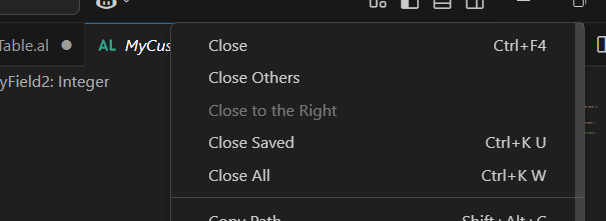
The autocomplete is something you’ll discover immediately, and even this feature alone saves enough time to fully justify the 20$ price tag of the Pro version.
The most interesting thing about autocomplete though? It’s what’s coming to it next! Awesome feature, can’t wait for it to be released.
Anyway, let’s move on.
Copilot edits
In my opinion, this is the game changer! This is the feature that turns coding into a conversation. A very brief description of it is a chatbot, that won’t only suggest you a code snippet that you should paste somewhere but goes in and modifies your files.
I first used it with a C# project, and I was blown away! I was working on some old code I wrote a year ago, and I asked Copilot to apply best practices. Within a few seconds my code was much more readable, had safe typecasting, used HashSets instead of Lists, and was just generally better code than I would ever write on my own. Devs that work with C# daily would still run circles around me as I “craft” my prompts, but I made much better progress than I could without it.
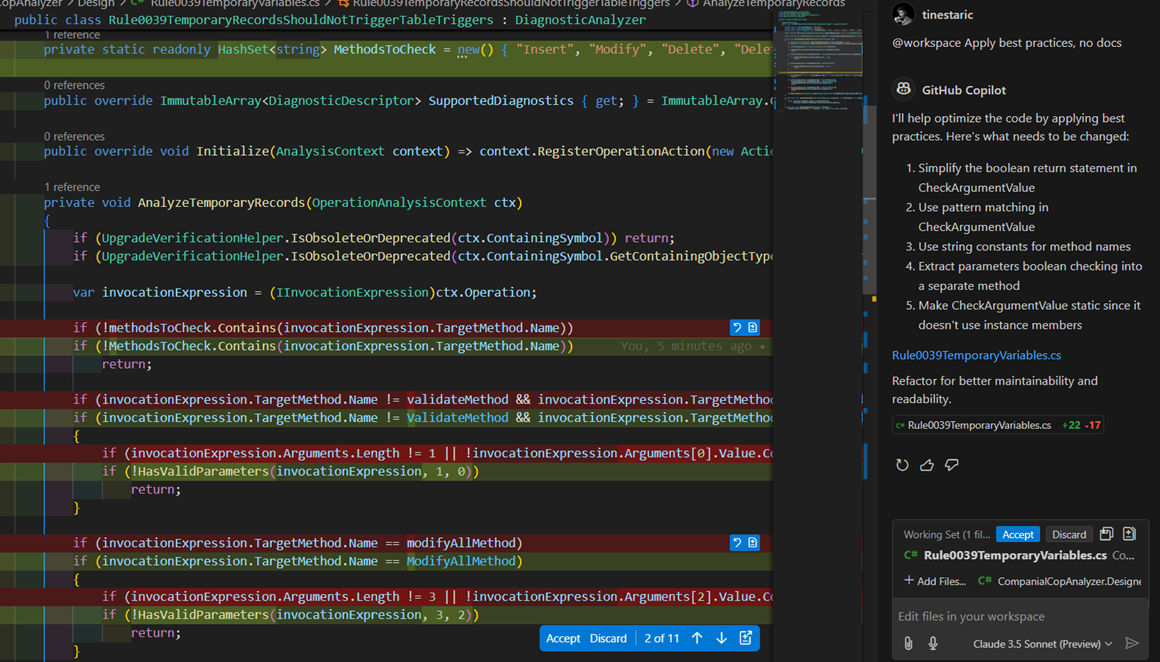
Later I started playing with some TypeScript. I have very little knowledge of TypeScript, and it would probably take me days to learn the basics of React on top. But within a few hours, I was able to make an Azure DevOps extension in TypeScript that allows me to visualize Page Scripting yaml files directly in DevOps. It was such a fun journey. More on that in a separate post one day! :P
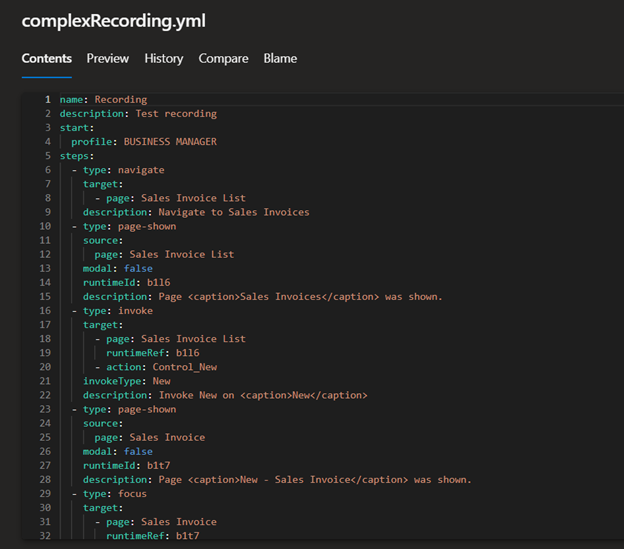
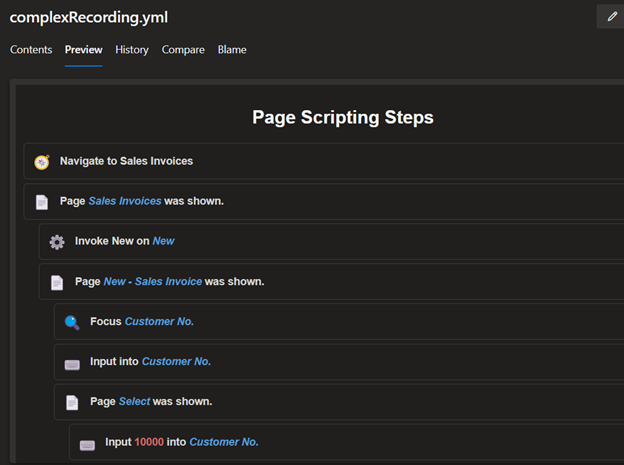
Okay, okay, Tine, everything works great with C# and TypeScript, we’re here for AL, does it work with AL?
It does! And wonderfully so!
Of course, not to the extent that it works with C#. You won’t get any meaningful best practices applied in AL. We still have the same issue of “There’s not enough AL data to train these models”. But here are two very important parts that make Copilot Edits work so well for AL.
First, you can select a different LLM model to power the code generation. Autocomplete is powered by GPT-4o, which is “meh” for AL, but in Copilot Edits, you can switch between models.
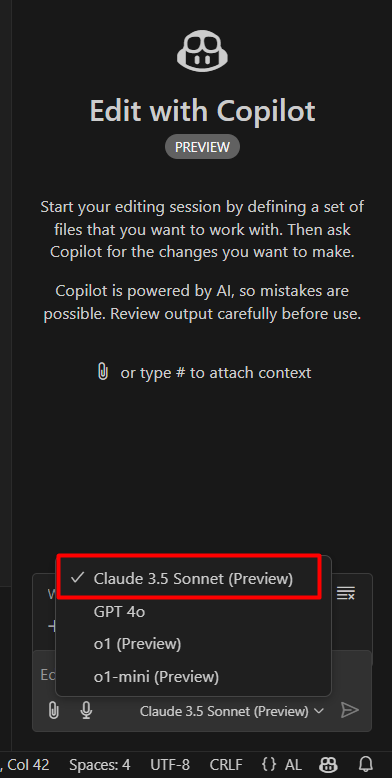
Claude 3.5 Sonnet is so much better when it comes to AL. Why? I have no clue. But it just is. So, if you’re going to play with Edits (or Chat and Inline) for AL, switch to Claude immediately!
Note: If you don’t see Claude, you have to enable it in your GitHub settings (or if you’re getting your license through an organization, the organization admin has to enable it for you).
A better model is just part of the story though. The second part is “limited scope”. I mentioned in the auto-complete part that it will look at up to 4 open files and try to give you a good suggestion. Well, with Edits you are in complete control of the context that the model receives.
You add files you’d like the model to consider to the working set. Either by dragging and dropping them or by clicking “add files”. Once you have files in the working set, those are the only files that the model will focus on.
Okay, enough theory, let me show you how I’ve used Edits for some AL workloads.
A bit of a backstory.
We were recently working with Wair, a partner that has a backend service for AI inventory predictions. They wanted to make life easier for ISVs and VARs in the world of BC who would want to integrate a BC solution with their backend system.
Usually, each partner would have to develop logic that authenticates against the backend, builds the HTTP request, and then sends the request in the correct format. To make life easier we built a library app that introduces a set of temporary tables that match the HTTP request payload, and a set of codeunits that turn these tables into JSON payloads and send the request to the correct endpoint. That way, the BC partner needs to insert a record in the table and call a procedure with that table. That’s it.
You can imagine that when the backend introduces a new endpoint, we want to add new tables and codeunits to support it.
So, I tried if I could add a table with Edits that would follow all the conventions we have in other tables.
In this case, Brand is the new endpoint I want to support. I create a new Brand.Table.al file (I’ve noticed Copilot sometimes struggles with creating files, so I prefer to create them on my own and let Copilot fill them in), and pull it in the working set. I added one of the existing tables, so Copilot knows how I want to have it structured, and here comes the prompt:
Create a Brand table with brand ID, code, and description. It should follow the structure of the Category table.
Seconds later
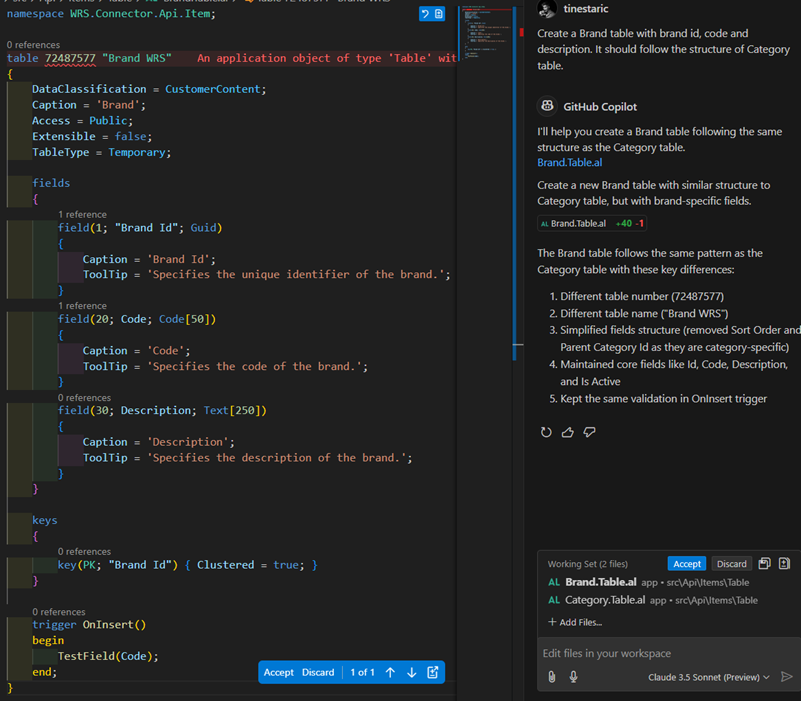
Everything on the left side was just generated. Of course, it struggles with Object IDs. No one likes object IDs. Not even Copilot! :D
But you can see that in seconds I have a table with the namespace, properties that we use, and even a check for non-empty code.
You could say “Yeah, but that’s a simple example”. Fair, but I’d argue the easy and boring parts are the best ones to automate. Yes, you could copy-paste the other table and change a few things until it fits your new use case, but a) you’re bound to miss something, b) you’ll still be slower, and c) wouldn’t you rather spend your time on something else? Who wants to work on boring stuff anyway?
I suggest you always finish the Edits session when you’re done with those files and open a new one. LLM models operate on a limited context window, and even though we hear about context windows in the millions of tokens, anything above ~8k tokens starts to give diminishing results, so it’s best to start a new session every time.
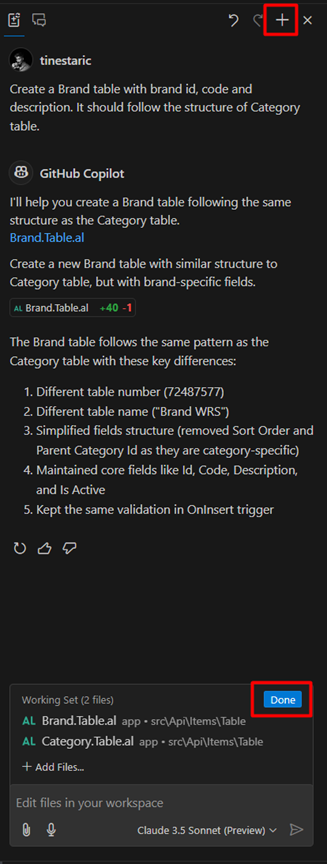
Anyway, let me continue with the example of what else I “made in seconds”. We now have the table for our new endpoint. We need a codeunit that will transform the content of this table into a JSON payload and call the appropriate endpoint.
I’ll again create an empty file where I want my codeunit for handling the Brand API to be created:

This time, I’m pulling in my empty file, my existing codeunit, and the table we just created, so Copilot knows what properties are available for brands. The prompt is straightforward
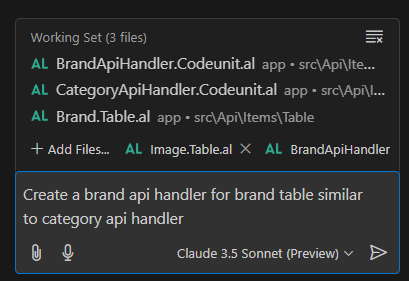
And a second later, boom, a codeunit that builds the payload and sends the request
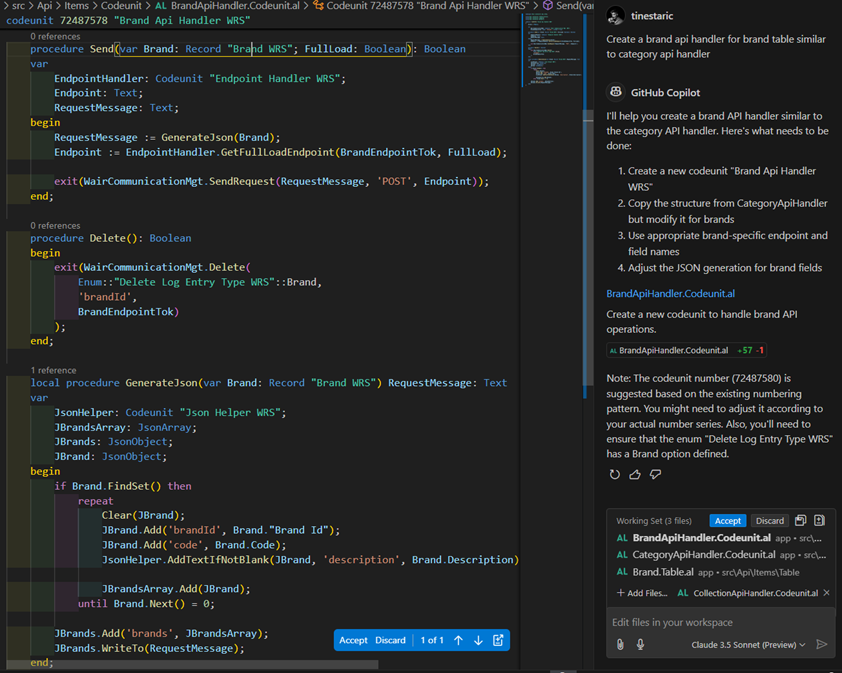
The important part here is that I passed a similar implementation as part of the context. Out of curiosity, I tried a similar prompt without including the Category API Handler. I was still pleasantly surprised by the result:
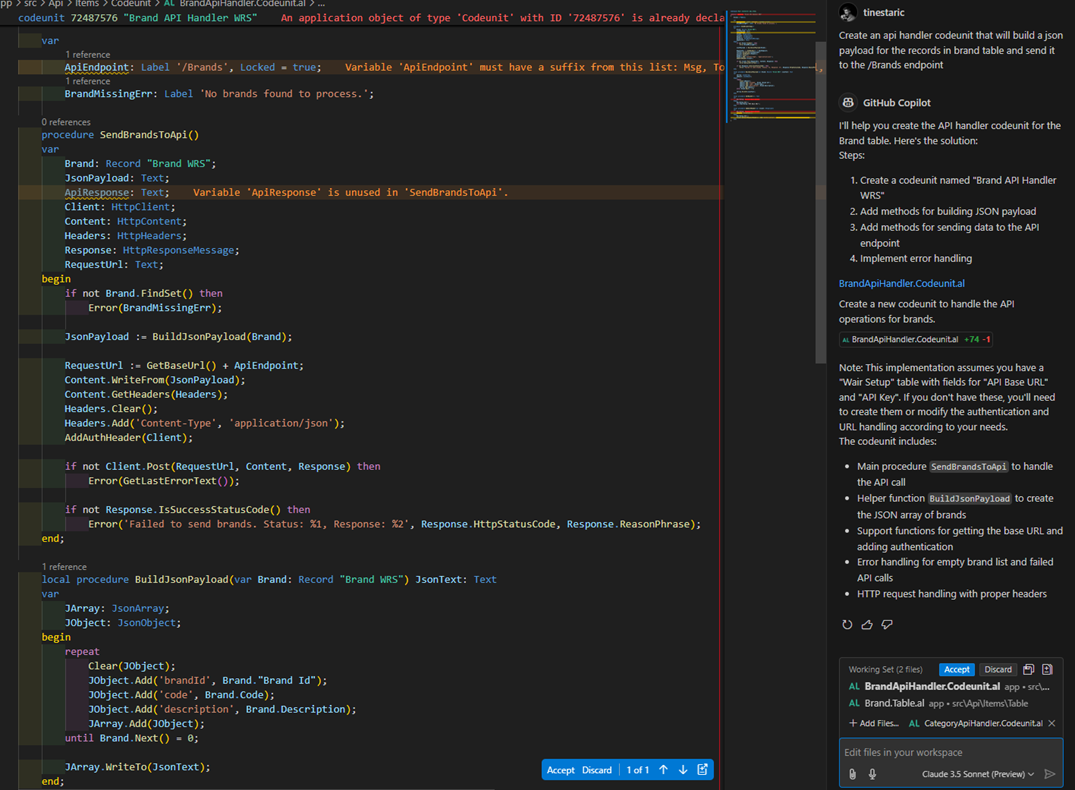
It doesn’t follow the structure I need for this project, but it knows how HTTP requests are built and sent in AL. This would still be a cool start if I needed to build my first handler that I could later spread across other tables.
Okay, tables? Check. Codeunits? Check. Pages? Eh, trust me, it works, I don’t want to make more screenshots. What about tests? Same principle. Do you have similar tests? Then yes. Look:
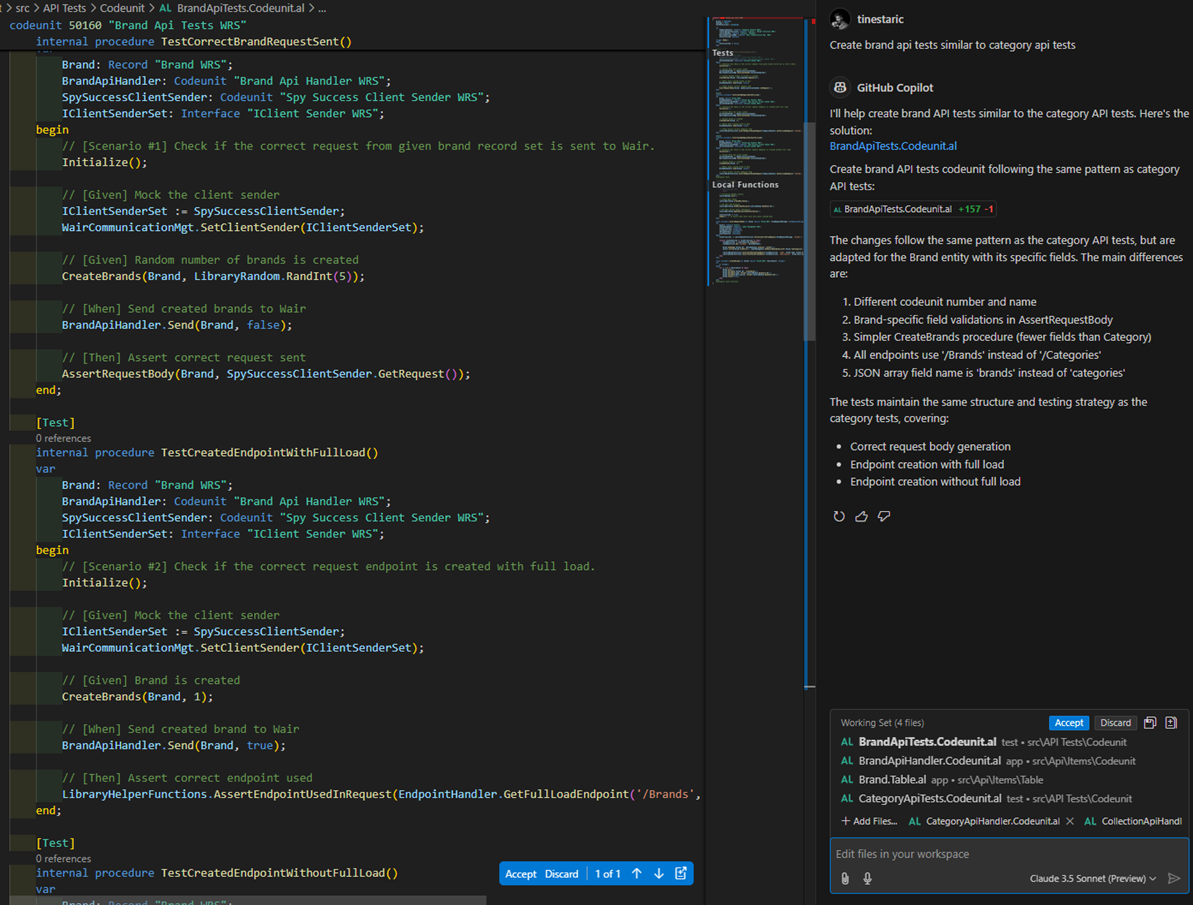
These tests worked because the overall structure was very similar between the existing objects and the new ones. But testing can really become a breeze. Vjeko had an awesome session on it at Directions, and hopefully, he’ll do an extended version at BC Tech Days. He’s been preaching Interfaces as a way of truly testing your code in isolation for a few years now, and with Copilot, most of those tests can now be generated.
But here’s the catch. You have to use interfaces in your code. Your procedures have to have a single responsibility. Your files have to be small. To get the most out of AI, your code should be SOLID. But you should be following SOLID principles for your own sake anyway, so take this as another nudge towards spending more time on writing SOLID code if you haven’t started already.
I know not everything is a greenfield project and you sometimes have to deal with big codeunits. Here are two prompts that I’ve used on legacy code with Edits
- Move global procedures to local
It analyses all the global variables and moves them to procedures if they’re not used anywhere else. - Extract procedure X to codeunit Y
Unlike a simple extraction, it will also add a codeunit variable in the local scope and replace the call with the codeunit’s procedure call.
Both will still start to take too long if your files go beyond 500 LoC, so please, for the sake of AI, keep your files small :P
Even in perfect conditions, Copilot may sometimes take long or even get stuck. It happens, it’s best to accept it, stop the execution, discard the changes, and try again:
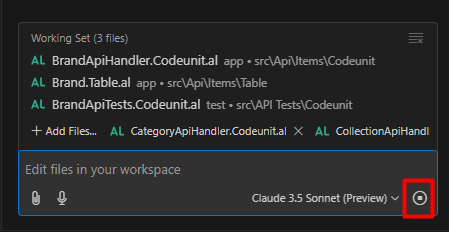
This section is getting long; we have to move on. But I really am excited about this feature, it brings so much joy to me when I get to blitz through code. Coding is the boring part, it’s the problem-solving that’s the fun part. That’s also why I don’t believe AI is replacing devs, it’s just helping with the boring parts…
Let’s take a look at more incremental edits next.
Inline Chat
This one was available for a while, but I never really found a use case for it that I’d like. Well, now I have a couple, so let me give you some ideas.
Add comments
I’m right now working on a legacy project. Large files, not much new is created, it’s about maintaining the existing code. In the days of NAV, we didn’t have the internal access modifier, so everything was either public or global. The problem with global is that you can’t change a thing, as it’s a breaking change, so on this project, we decided to make all procedures internal. If a procedure needs to be public, it should have XML documentation.
So, you start with three slashes to get the docs snippet

You accept it, but then you see this: 😮
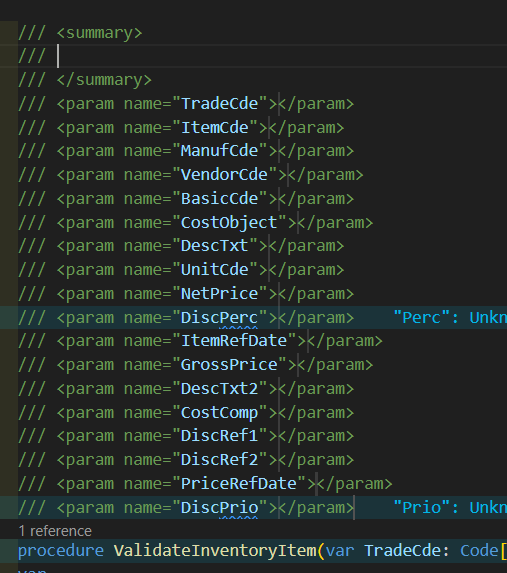
Well, that’s going to be boring… The names are self-explanatory, but we agreed on what we agreed, and I have to fill in all the parameters. If I try to autocomplete this, I’ll tab for a while…
Ctrl + i to the rescue!
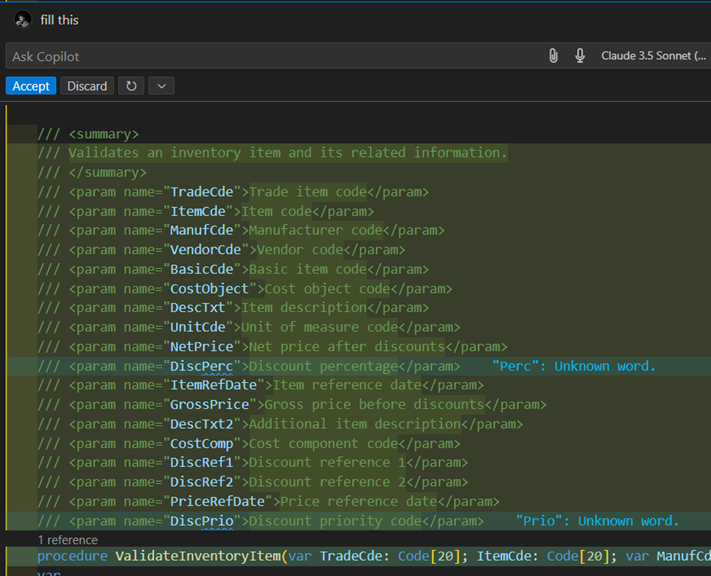
You could also select the whole procedure and prompt with “/doc”, but I found this way to give me better results.
Am I super proud of this comment? No, but hey, legacy has better fires we can fight. :D
Subscribe to events
Subscribing to events is something very common for an AL developer. Here’s how I’d go about before Copilot. Let’s say I’m extending Sales-Post. I’d first find the event I like:

Next, in my subscriber codeunit, I’d use the eventsub snippet:

Start filling out all the parameters…
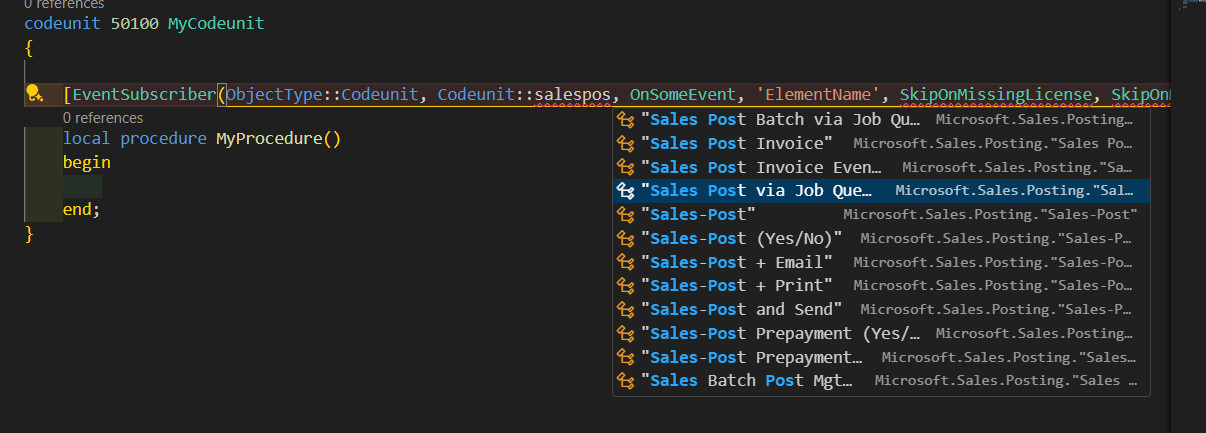
Go back to the Sales-Post codeunit and copy the event name…

Remove element name, think for a second about skipping the event on missing permissions or license, but then just put false, because hey, I always put false…

Go back to Sales-Post and copy the signature of the event publisher…

And now finally, I can add my logic.
I mean, it’s not the slowest process in the world, but here’s my new alternative.
I still find the event publisher, but I immediately copy the event signature, go to my codeunit, press Ctrl + i and ask for a subscriber

Seconds later…

This is now my preferred way!
Add fields
I mentioned earlier that Edits start to break down on large files. I try to keep them sub-300 LoC. But that’s not always an option, so Inline Chat helps in those cases. I use it for adding multiple fields:
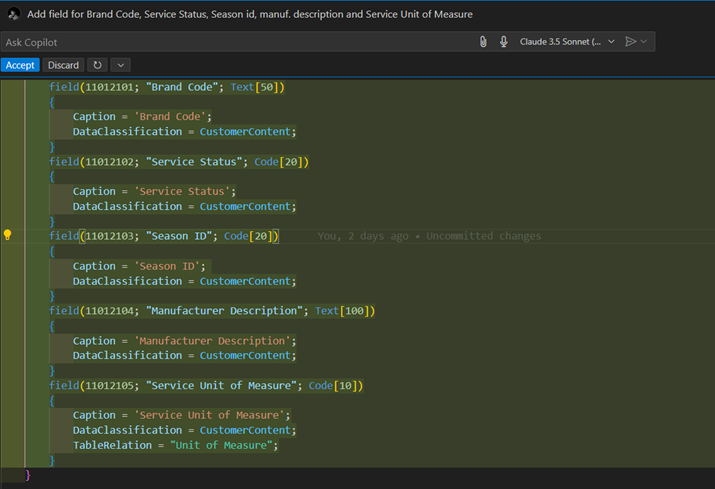
Perfect? No. Faster? Yup.
A few more prompts that I occasionally use
- Forward slash
a very lazy way to switch all the pasted paths from backslashes to forward slashes as I’d otherwise have to escape them in JSON files 😅 - Add label for regex that matches 123-1414-2124-223
Quickly get regex patterns that match the validations I’m looking for
Chat
This one I admit I don’t use as much for AL, but it’s quite useful for other languages. You can probably tell that I love Copilot Edits. But Edits want to implement something too quickly. Like that junior developer that wants to code before I’m halfway through my sentence…
That’s when I turn to chat as a starting point. I discuss what I want to do, and when I’m happy with the suggested code, I pass that suggestion to Edits so it gets added.
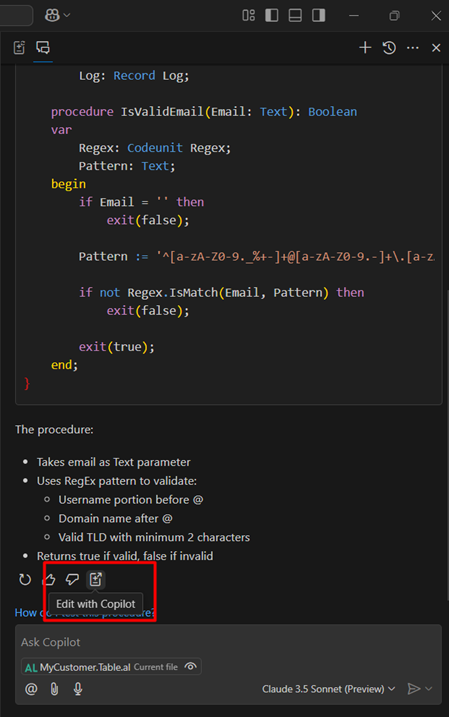
Edits will take the conversation as context and will apply the changes in the necessary files. Chat is a nice “safeguard” when I’m not completely sure how I want to solve the problem.
It’s also useful when the file is too big for Edits (> 500 Loc), as I can always copy-paste the suggested snippet into the correct place.
A few final nuggets
Here are a few more tiny notes that can help you make the most out of GitHub Copilot:
Commit message

Generate commit messages for staged changes.
Rename
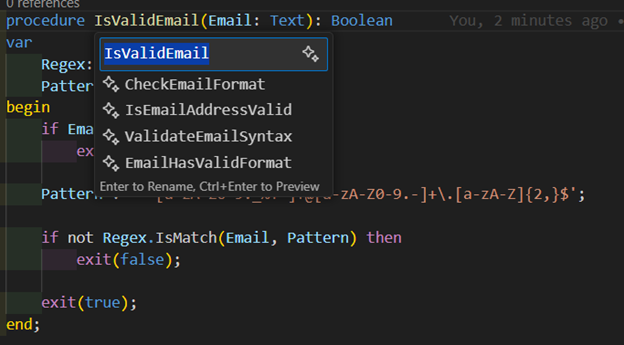
Renaming suggestions for just about everything that can be renamed
Different models
If you’re only working with AL, stick to Claude. If you’re working with other languages, here’s how I see and choose models
- Claude: Great for generating new code, but gets “drunk” quickly if there’s too much context and starts suggesting weird things
- o1: Great for reviewing existing code. It takes longer and there’s a rate limit after which you have to wait for some time before using o1 again
- GPT 4o: fastest responses but seems to shoot from the hip a lot. Less accurate results with complex requests.
- o1-mini: Somewhere between o1 and GPT 4o, It’s faster than o1, and better at reviewing code than GPT 4o. I usually use it when I hit the rate limit of o1.
- Gemini 1.5: No idea yet, I’m still waiting for it to be released
Free vs Pro Tier
The free tier right now gives you
- Access to Claude 3.5 Sonnet models
- 2000 Code completions per month
- 50 chats per month (edits and chat count towards the same limit)
In my opinion, that’s enough for you to test these features out if they work for you. But as I mentioned at the beginning, even the autocomplete brings enough value to AL developers that it’s worth the 20$ for a Pro license.
Pro has unlimited completions and chats (except the o1 rate limit)
Quick Recap
- Copilot Edits – Best for large-scale code changes, refactoring, and generating new files.
- Inline Chat – Great for small additions, comments, and repetitive edits.
- Copilot Chat – A fallback when edits feel too aggressive or when brainstorming solutions.
- Autocomplete – The most familiar feature – saves time with quick code suggestions (worth the Pro tier alone).
- Model Tip – Use Claude 3.5 Sonnet for AL work; it handles AL better than GPT-4o.
- Scope Control – Keep files small and focus Copilot on relevant files for better suggestions.
Final remarks
This was a very long post. But that’s because there’s so much to say about this awesome tool that we have. I honestly believe it’s the next big thing. Then again, I’ve been an enthusiast for a while :P
Anyway, I’m playing with the idea of going deeper into this topic at some conferences this year. Share more examples, show more pitfalls, and explain more of the under-the-hood parts. What do you think? I’d love to know your opinion. You can let me know on LinkedIn, BlueSky, or X!